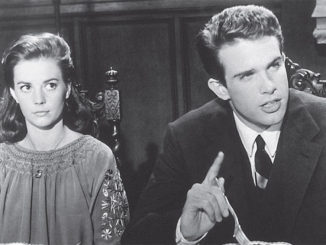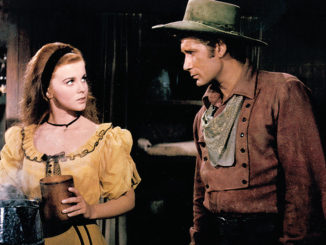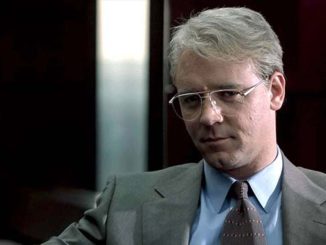
by David Handman, ACE
I was 14 years old in the summer of 1969. Both Robert F. Kennedy and Martin Luther King, Jr. were assassinated the year before and, with the Vietnam War escalating, the civil rights and anti-war movements were in high gear on high school and college campuses across the country. Times were changing, and pop culture reflected it. On August 7, 1969, two weeks after Easy Rider and two weeks before Woodstock, Warner Bros. released Sam Peckinpah’s The Wild Bunch, firing a warning shot to the older generation that they better change with the times or risk irrelevance.
Set during the Industrial Revolution, The Wild Bunch follows a group of aging outlaws whose biggest problem is their inability to change with the times. Progress is the greatest threat to their way of life, and they see no way of living beyond their guns. From the start, Peckinpah introduces us to the violent world his characters inhabit, and presents a theme that runs through all his work: Violence is part of our nature––in the very DNA that we pass on through generations––and all that separates us from wild animals is a moral code.
In the opening scene, the bunch rides into Starbuck, a frontier town on the Texas/Mexico border, to rob the bank. Along the way, they pass a group of children at play burning a nest of scorpions. On the other side of town, a church group is forming a temperance march. At the same time, a group of bounty hunters, hired by the railroad, lie in wait on a rooftop across the street from the bank. A collision course is set in motion, brilliantly crafted by editor Lou Lombardo, which builds tension by inter-cutting between the groups. The sequence climaxes with the bunch using the townspeople as human shields to make their escape.
The industry was going through a tidal wave of change then, and Peckinpah’s warning in 1969 to embrace it or risk irrelevance was particularly prescient for editors. Our tools were changing from project to project as the industry transitioned from film to computers.
Slow-motion cuts are splashed at key moments underscoring the violence. A horse falls through the bank window. A man is shot to the ground. Time seems to momentarily stand still, then resumes at break-neck speed. Ironically, the effectiveness of its technique led the film to be criticized at the time for glorifying violence––even though it was intended to serve as a cautionary reminder of what happens when men give in to their most savage impulses, and the collateral damage that society suffers as a result.
I had been wrestling with the idea of majoring in film and, after seeing The Wild Bunch, decided to apply to USC School of Cinematic Arts, where I’d later write a paper about it, and focus on editing. I graduated in 1976 and got a job as an apprentice editor at Studio Center, where I began learning the craft much the same way it had been taught since the beginning––by repetition.
Every task seemed to involve countless repetitions of splicing film. Later, as an assistant, I maintained the editor’s workflow by organizing the dailies, filing the trims and keeping the codebook. I began to think like an editor and eventually was promoted. Then, almost overnight, everything changed.
I became an editor in the late 1980s. The industry was going through a tidal wave of change then, and Peckinpah’s warning in 1969 to embrace it or risk irrelevance was particularly prescient for editors. Our tools were changing from project to project as the industry transitioned from film to computers, and many who couldn’t adapt were forced to retire. I was learning new systems as they developed so I could keep working, from the Montage to the CMX 2000 to Lightworks to Avid. Even now I’m learning Final Cut Pro for the project I’m currently on. In time, computers made my job much easier. Now I’m a member of the older generation, and recognize a responsibility to create new workflows that help groom the next generation of editors in an environment that has me much more isolated from my assistant than it was for me coming up.
The Wild Bunch was re-released last year on Blu-ray to commemorate its 40th anniversary, and, as one of the great anti-war films of its era, it remains as relevant today as it was in 1969. In the aftermath of 9/11, the torture of terror suspects points to the fragility of our moral code in the same way the My Lai Massacre did in 1968, and men and women who are my age—when I was almost drafted during Vietnam—are fighting today in Iraq and Afghanistan. But 40 years after the assassinations of Kennedy and King, the first black president resides in the White House, suggesting to me that even if the cycle of violence hasn’t been broken, at least we’re evolving.





